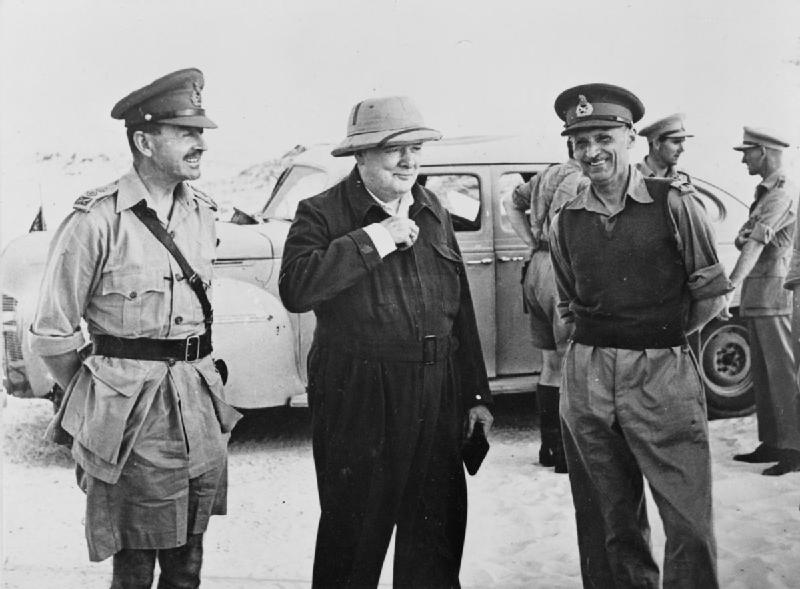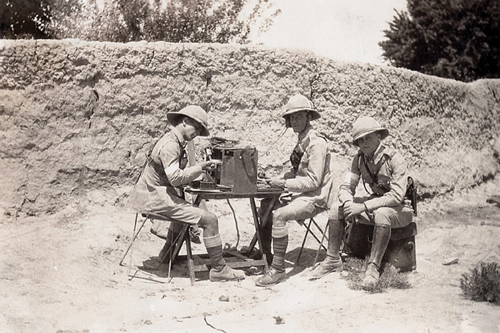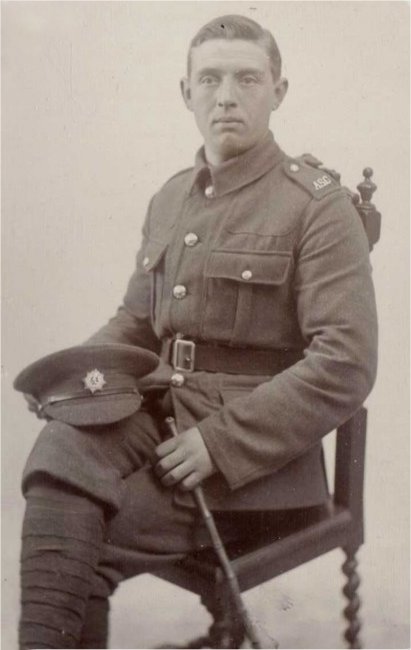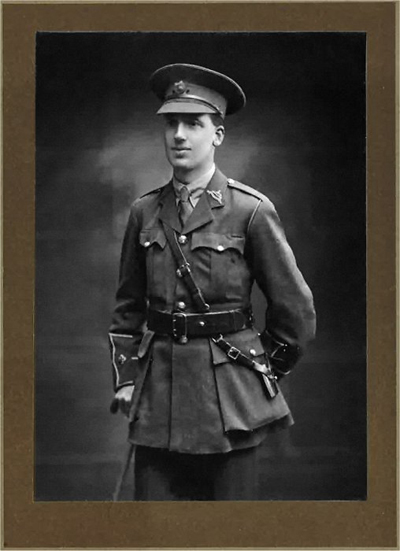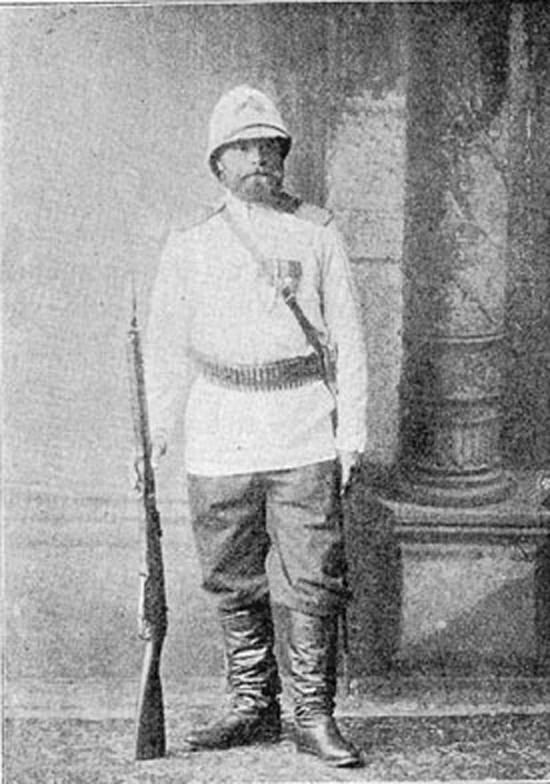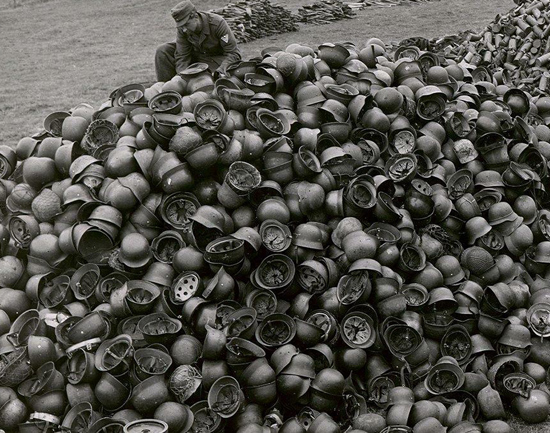The Bombay Bowler (BB) is often confused with the Cawnpore Tent Club and Khaki Solar Pith Hat, in fact the latter two are often confused with each other. However, the Bombay Bowler is considerably smaller than the other two. Continue reading
Royal Corps of Signals
The Royal Corps of Signals was formed in 1920 however prior to that date the Royal Engineers provided a communications system during the Crimean War and the Abyssinian War of 1867 brought further active experience for the telegraphists and signalers of the Royal Engineers. 1
Note the white/blue armband worn by the signalers in the above photograph.
Wolseley Helmet of the A.S.C. East Africa Force
An often overlooked area of conflict during World War One is East Africa. The Wolseley helmet in this article was purchased by me in 2004 from a relative of the owners’ family. Continue reading
A Wolseley of the 10th Lincolnshire Battalion “The Grimsby Chums”
Having recently purchased this Wolseley helmet, I was intrigued as to why it appears to have never been worn. Some initial investigation of the name inside W.D.Wroe, 10th Lincolns, led me to “The Grimsby Chums”, one of the tragically named Territorial “Pals Battalions” so often decimated on the World War One battlefields. Having never been sent to any of the theatres of War in Egypt or Mesopotamia, I wondered why W.D. Wroe would have had a Wolseley Helmet and why it was in such good condition.
The Canadian Royal Horse Artillery
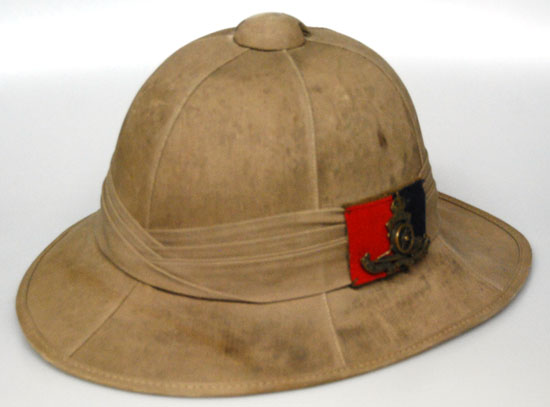 The Canadian military is most remembered for its heroic actions in Italy and Western Europe during the Second World War, but it was still active in every theater of war. More than 1.1 million Canadians served in the Army, Navy and Air Force and its entry into the conflict was the nation’s first independent declaration of war.
The Canadian military is most remembered for its heroic actions in Italy and Western Europe during the Second World War, but it was still active in every theater of war. More than 1.1 million Canadians served in the Army, Navy and Air Force and its entry into the conflict was the nation’s first independent declaration of war.
During the North African, Middle Eastern and Sicilian campaigns the Canadian army was outfitted in a tropical uniform. Among the more “anachronistic” looking of these was the uniform worn by units of the Royal Canadian Horse Artillery.
The Russian Colonial Pattern Sun Helmet
Imperial Russia had one of the largest empires in the world at the end of the 19th century. While the sun most certainly did set on it – it spanned several time zones and stretched from the Baltic and Black Seas to the Pacific. What it did not have was a true overseas colonial empire – with the exception of Alaska!
It is true that the Czar ruled many peoples who spoke different languages and had different customs and cultures. Yet Imperial Russia was different than the rival empires of Great Britain, France, Germany or even Italy. It ruled more land that the latter two but it had no true tropical colonies. While it did send forces to China – and units took part in the Boxer Rebellion (1899-1901) – most of the troops were from the Russian Imperial Navy not actually the Russian Army.
Thus it would seem that the Russians never had a use for a colonial pattern sun helmet. Interestingly the Russians did however use such helmets in small numbers. While the first thought would be that the helmets were used by marine forces traveling with the navy this isn’t accurate. Continue reading
Where Are They Now? The Discarded Helmets of World War II
There are dozens of known images – such as the one above – of piles of steel helmets that were collected during and then after the end of the Second World War. The Germans had collected massive piles of steel helmets from Poland, Denmark, the Netherlands, Belgium, and of course France. After the end of the war there were practically mountains of German steel helmets! All of these have been well documented in period photographs.
With conservative estimates the piles could literally be worth millions of dollars, and for collectors of steel helmets these photos have almost mythical quality. However, the question this writer has long had was whether there were ever similar piles of sun/pith helmets? Given the thousands of German and Italian soldiers who surrendered in North Africa at the end of 1943 it must be asked what happened to the equipment – notably the sun helmets. Continue reading

